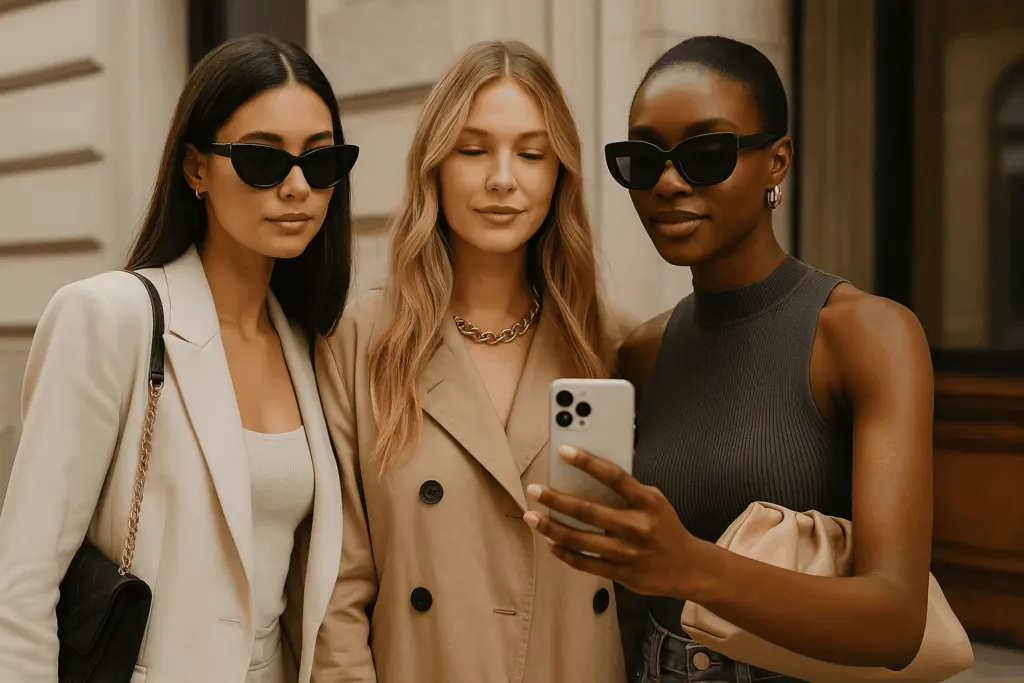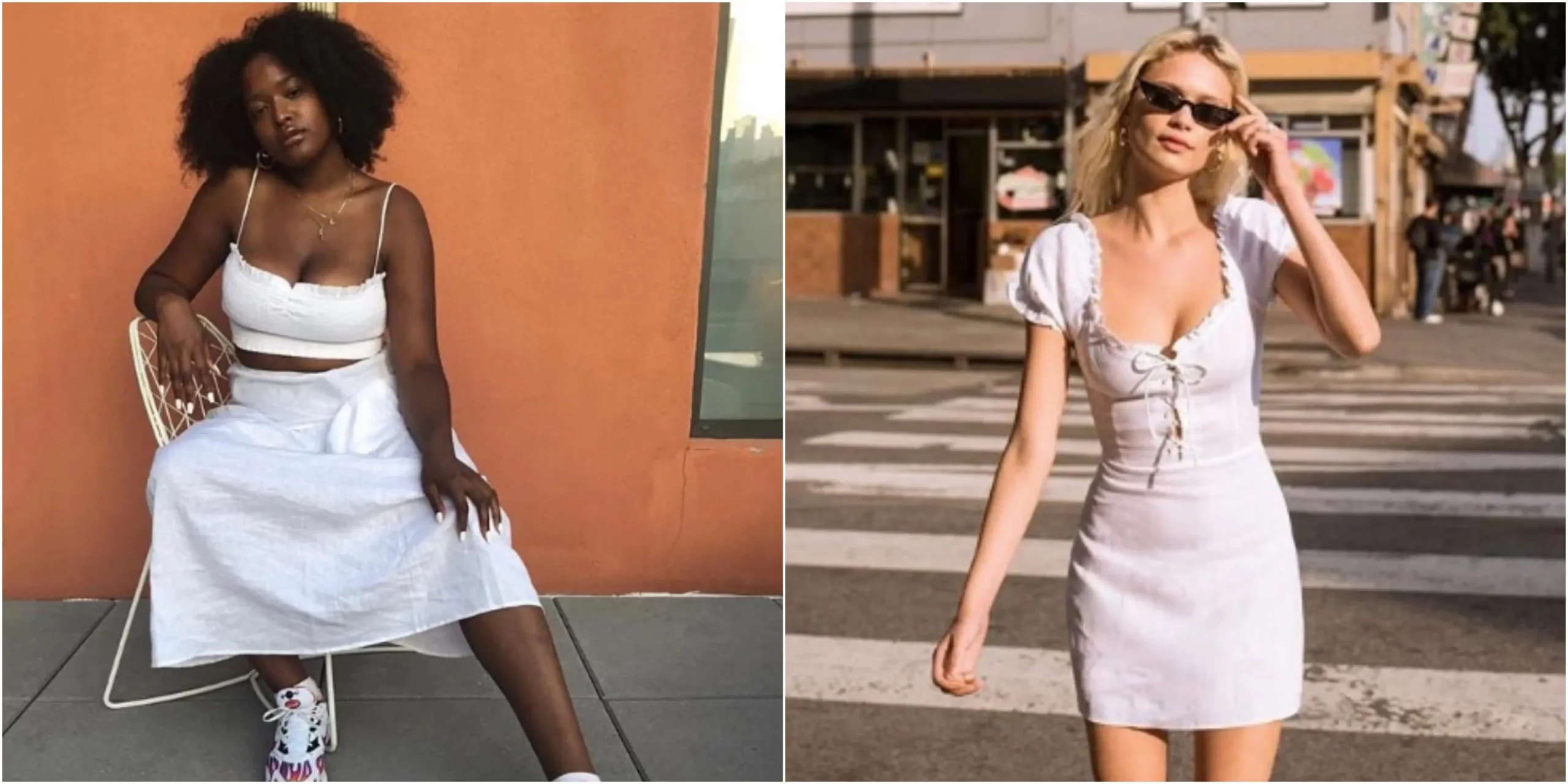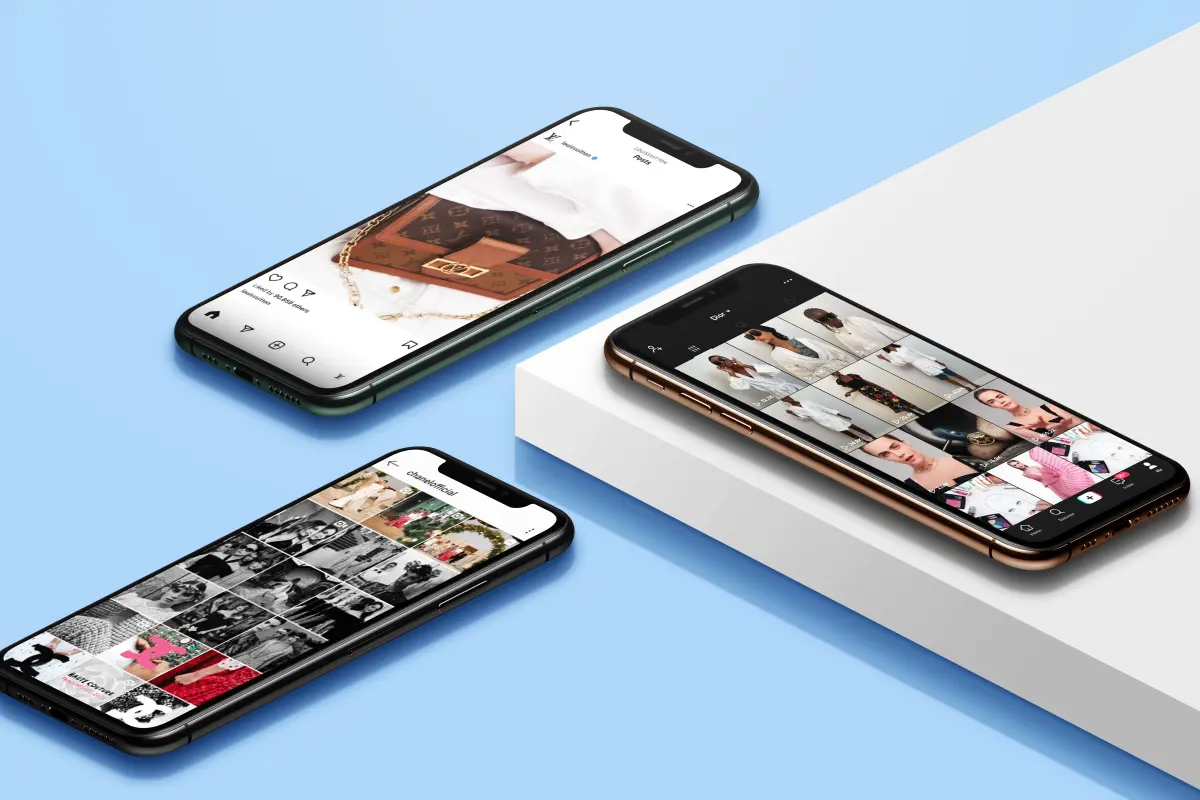
Fashion Goes Social
In today’s fast-changing digital world, fashion lives and breathes on Instagram. One captivating post can turn a small startup into one of the top trending clothing brands in just a few hours. The platform defines what’s chic, stylish, and worth sharing — from viral outfit videos to influencer-driven capsule collections. Fashion no longer waits for seasonal runways. It thrives in the feed, where trends, fashion brands, and creativity collide in real time.
Instagram fashion is not just about clothing. It’s about energy, personality, and connection. Every post tells a visual story that invites followers to engage. Through visual storytelling, clothing brands on Instagram transform casual scrollers into loyal shoppers. They use videos, reels, carousels, and Instagram Stories to showcase new collections, innovative accessories, and outfit inspiration that resonates emotionally, while also showcasing their brand heritage and craftsmanship through curated Instagram content. It’s where confidence meets creativity, and fashion becomes part of the daily scroll.
In this social-first world, fashion brands compete on agility and authenticity. A single influencer collaboration can boost visibility overnight, while a missed trend might cost a brand thousands of potential followers. To stay relevant, brands combine storytelling, style, and strategic execution — highlighting their unique aesthetics and values through their Instagram feed, a new balance between art and analytics that defines modern success.
The Power of Instagram Fashion
Instagram has become the heartbeat of the global fashion world. Every scroll reveals a universe of inspiration — from minimalism and chic streetwear to opulent luxury designs. Influencers now play the role of digital curators. They define trends, set the tone, and guide audiences toward new fashion brands worth exploring. A viral look can start from one influencer and ripple through millions of feeds.
Brands like Alo Yoga, Reformation, and House of CB have perfected the art of digital presence. Each brand focuses on connecting directly with fans by offering high quality materials, smart sustainability, and clear storytelling. Their brand offers more than products — it offers lifestyle and emotion. By blending authenticity with aspiration, they build a loyal following that keeps coming back.
These companies understand that fashion on Instagram is not just about posting pictures. It’s about creating experiences. Through behind-the-scenes videos, outfit tutorials, and collaborations, they transform shopping into a shared journey. This strategy builds credibility and emotional connection — turning followers into advocates. By doing so, brands create a sense of authenticity and aspiration that truly resonates with their audience.

Top Trending Clothing Brands and What Makes Them Stand Out
Let’s look closer at the popular brands driving this digital fashion revolution. Each represents a distinct balance between creativity, purpose, and quality. Some brands stand out for their focus on high-quality basics and essential wardrobe staples, offering well-crafted, durable pieces that form the foundation of a stylish, sustainable wardrobe.
|
Brand |
Style Identity |
Why It Works |
|---|---|---|
|
Jacquemus |
Playful minimalism with artistic roots |
Combines elegance and humor with authentic storytelling |
|
Skims |
Everyday essentials designed for comfort |
Inclusive marketing and influencer-led campaigns |
|
TALA |
Sustainable activewear |
A brand offers eco-friendly designs and digital-first engagement |
|
The Frankie Shop |
Urban, minimal, and chic |
Effortless style with high quality fabrics and timeless design |
|
Sporty & Rich |
Retro health-meets-luxury look |
Promotes wellness and exclusivity through clean visuals |
These brands are defined by features such as their unique mix of styles, innovative collections, and trendy offerings that appeal to a wide range of fashion enthusiasts.
These fashionable clothing lines don’t follow the old fashion calendar. They design fast, react faster, and use PLM software fashion tools to track trends and feedback. Many merge sustainable fashion practices with creative innovation. The result: collections that look modern, feel personal, and deliver unmatched quality.
Their brand focuses on storytelling, community, and timeless style. They build wardrobes that include everyday essentials, basics, essential pieces, timeless classics, and elegant outfits for every mood. In a market defined by change, they stay ahead by listening closely to their audiences and responding with purpose. Their ability to mix different styles and stay trendy ensures they remain at the forefront of the fashion industry.
When it comes to luxury, high-end brands like Louis Vuitton, Gucci, Chanel, and Dior continue to set the standard for exclusivity and style.

Challenges of Staying Relevant in Fast-Paced Instagram Fashion
The fashion world is faster than ever. What’s trending today might be outdated tomorrow. Brands face immense challenges trying to stay fresh and consistent:
- Non-stop demand for new designs and micro-trends
- Pressure for ethical sourcing and sustainability
- The complexity of managing influencer edits, capsule launches, and collaborations
- Balancing quality craftsmanship with short production cycles
To survive, brands must combine creativity with structure. This is where Product Lifecycle Management (PLM) becomes a game-changer. Apparel PLM gives fashion brands the tools to manage designs, materials, suppliers, and marketing under one system. It connects ideas to execution — keeping every collection consistent, fast, and flexible.
A well-implemented PLM system ensures each brand offers products made from high quality fabrics and crafted with attention to intricate details, emphasizing meticulous attention to detail in both design and production to achieve superior craftsmanship, texture, and finishing. It also helps brands measure sustainability progress, improving both production efficiency and customer trust.
E-commerce and Online Shopping: The Digital Storefront Revolution
The digital storefront has become the new heart of fashion, reshaping how brands connect with their audiences. E-commerce and online shopping now offer customers the freedom to explore, compare, and purchase from anywhere, at any time. This shift has empowered fashion brands to showcase their collections beyond the limitations of physical stores, reaching a global audience with just a few clicks.
Brands like Trendia, Alo Yoga, and Everlane have mastered the art of creating immersive online experiences. Their digital storefronts are more than just shops—they are platforms for storytelling, where every product page highlights the brand’s commitment to high quality materials, sustainable fashion, and timeless classics. Through detailed product descriptions, behind-the-scenes content, and customer reviews, these brands build trust and foster a loyal following.
Online shopping also allows fashion brands to quickly adapt to trends and customer feedback, ensuring that their offerings remain relevant and appealing. By focusing on quality and sustainability, these brands not only attract conscious consumers but also set new standards for what it means to be a leader in the digital fashion world. The result is a seamless blend of convenience, style, and substance—where every purchase feels personal and every collection tells a story.
How PLM Software Powers Instagram-Driven Brands
Modern fashion brands depend on PLM software fashion to bring structure to speed. It powers collaboration, tracks data, and enables smart scaling. PLM allows brands to focus on their core values and priorities, such as quality, innovation, or craftsmanship, ensuring these distinguishing features are maintained throughout the product lifecycle.
1. Real-Time Collaboration
Designers, sourcing teams, and marketing experts connect globally. Every change updates instantly — from denim jeans texture to accessory color palettes.
2. Faster Sample Approvals
Digital workflows replace long email chains. Influencers review prototypes online, giving feedback instantly. This speeds up production and reduces waste.
3. Visual Product Libraries
PLM software builds a library of visuals, materials, and high quality materials. Influencers can co-create designs using approved assets that align with brand DNA.
4. Data-Driven Design
Analytics show what fashion trends gain traction. PLM tools allow brands to track engagement, sales, and inventory in real time.
5. Integration with Forecasting Tools
By connecting to forecasting databases, PLM systems help brands predict the next viral trend and prepare collections that resonate with their followers.
These systems turn scattered teams into one aligned creative engine. Brands gain control over quality, cost, and time — while staying ready for whatever Instagram fashion brings next.

From Influencer Insight to Product Launch
In modern fashion, inspiration can come from anywhere — a post, a hashtag, or a celebrity outfit. Here’s how PLM helps create sell-out moments:
|
Stage |
Description |
PLM Advantage |
|---|---|---|
|
1. Trend Spotting |
Influencers highlight new styles |
PLM integrates social data for fast concept approval |
|
2. Design Concept |
Teams translate a clear idea or concept into visual sketches, considering both form and function |
Centralized workspaces enable clear communication |
|
3. Sampling |
Digital samples replace costly physical ones |
Improves sustainability and reduces turnaround time |
|
4. Vendor Coordination |
Designers and factories collaborate in sync |
Maintains quality control across every step |
|
5. Market Launch |
Brands and influencers share content, ensuring products are easily found by customers searching for the latest trends |
Timed campaigns maximize engagement |
This connected workflow transforms creative ideas into real products in weeks instead of months. From bags to accessories, PLM systems streamline every stage while maintaining luxury and elegance.
Why Influencers Love PLM-Driven Brands
Influencers love partnering with organized, responsive fashion brands. When every file, sample, and spec sheet arrives on time, collaboration feels effortless. A PLM-powered brand gives influencers creative freedom while ensuring brand consistency.
For example, Skims provides influencers with exact product specifications, from soft fabrics to design fits. This accuracy allows influencers to produce authentic content, helping brands maintain their loyal following and expand their audience reach.
This synergy fuels the influencer-driven fashion ecosystem, where content and commerce intertwine. Brands that use PLM not only streamline production but also strengthen relationships — a strategy that keeps their followers engaged and inspired.
Sustainable and Luxury Fashion: Balancing Ethics and Exclusivity
Luxury fashion is undergoing a transformation, as brands increasingly recognize the importance of sustainability and ethical responsibility. Today’s most respected fashion brands are redefining what it means to be exclusive—not just through rarity and craftsmanship, but by embracing high quality fabrics, responsible sourcing, and transparent production.
Brands such as Loro Piana, Gabriela Hearst, and Malina are at the forefront of this movement. They create elegant, timeless classics that reflect both luxury and a deep commitment to sustainability. By using high quality materials and prioritizing fair labor practices, these brands ensure that every piece is crafted with care and integrity. The result is a collection of garments and accessories that exude sophistication while minimizing environmental impact.
This new approach to luxury fashion appeals to consumers who seek both elegance and ethical value. The allure of exclusivity is now intertwined with the desire for sustainability, making timeless pieces even more appealing. As these brands continue to innovate, they set a powerful example for the industry—proving that it is possible to create fashion that is both luxurious and responsible, without compromising on quality or style.
The Future of Fashionable Clothing Lines
Tomorrow’s fashion brands will merge creativity, sustainability, and technology. Expect to see:
- Augmented reality try-ons and digital showrooms
- Sustainable production monitored through PLM dashboards
- Predictive drops powered by social media data
- Collaborative collections co-designed by influencers and fans
- Automated shop integrations that personalize the buying experience
PLM systems will act as the brain behind each operation, helping brands stay agile and innovative. From Louis Vuitton, Gucci, Balenciaga, and Chanel to emerging digital-first labels, everyone in the fashion world is adapting. The most successful will blend timeless aesthetics with next-generation function and flexibility.
Their goal remains simple: to create beauty, preserve authenticity, and maintain sustainability without losing the elegance and sophistication that define great design.
Conclusion: Staying Chic in a Digital World
As Instagram continues to shape what’s next in fashion, agility and innovation are the keys to staying ahead. The most popular brands combine strategy, storytelling, and technology to turn inspiration into instant impact.
PLM software ensures that fashion brands can produce faster, smarter, and more sustainably. It keeps teams focused on creativity while maintaining efficiency from concept to purchase. These systems empower brands to release collections that capture both the heart and the feed — reflecting their identity and personality.
In the fast-moving digital world, the blend of art, sustainability, and technology defines true luxury. With PLM software, the next viral outfit is not just luck — it’s a carefully crafted success story waiting to shine.





Leave a Reply